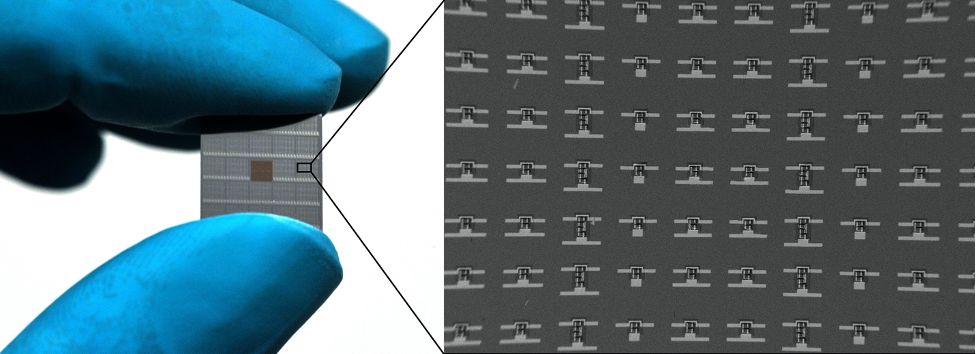Marc Miskin, Assistant Professor in Penn Engineering’s Department of Electrical and Systems Engineering, is among the 2021 class of Packard Fellows for Science and Engineering. The David and Lucile Packard Foundation’s program is one of the nation’s largest nongovernmental fellowships designed to allow maximum funding flexibility awarding $875,000 to 20 innovative early-career scientists over the course of five years.

Miskin will use the funds for research on microscopic robots to emulate fundamental biology, provide new ways of thinking about life and shape the microworld with precision and control.
“At a time when we are confronting so many difficult, intertwined challenges, including climate change, a global pandemic, and racial injustice, I am buoyed by the determination and energy of these 20 scientists and engineers,” said Nancy Lindborg, Packard Foundation President and CEO. “Through their research, creativity, and mentorship to their students and in their labs, these young leaders have the potential to help equip us all to better understand and address the challenges we face.”
The Packard Fellowship will help advance Miskin’s research into real-world applications for his microscopic robots, which are smaller than the width of a human hair and have flexible legs made of nanoscale strips of platinum and titanium. Using electrical currents generated by shining lasers onto solar panels on their backs, these robots can be programmed to move and interact with their environment, with the ultimate goal of acting as adaptable swarms of “smart” material.

On the same size scale as a microorganisms, Miskin’s robots are suited to precisely manipulate both living and non-living systems on a microscopic level, and the Packard Fellowship aims to encourage the creative research to explore those systems. For example, these robots could one day be programmed to patrol leaves and fend off parasites from a farm’s crops, or be injected into the human body and screen for cancer or other diseases.
In “Wowed by Science,” a video series highlighting the newest Packard Foundation fellows, Miskin shares how his fascination of the microscopic world was sparked in elementary school the first time he looked into a microscope.
“I still think it is amazing that you can look into a microscope and go into these fascinating worlds that we don’t typically see,” says Miskin. “And I would love it if in ten years, you could look through a microscope and see not just microorganisms, but tiny robots as well.”
Read more about this prestigious award and Miskin’s research goals for the 2021 Fellowship in the Foundation’s press release.
